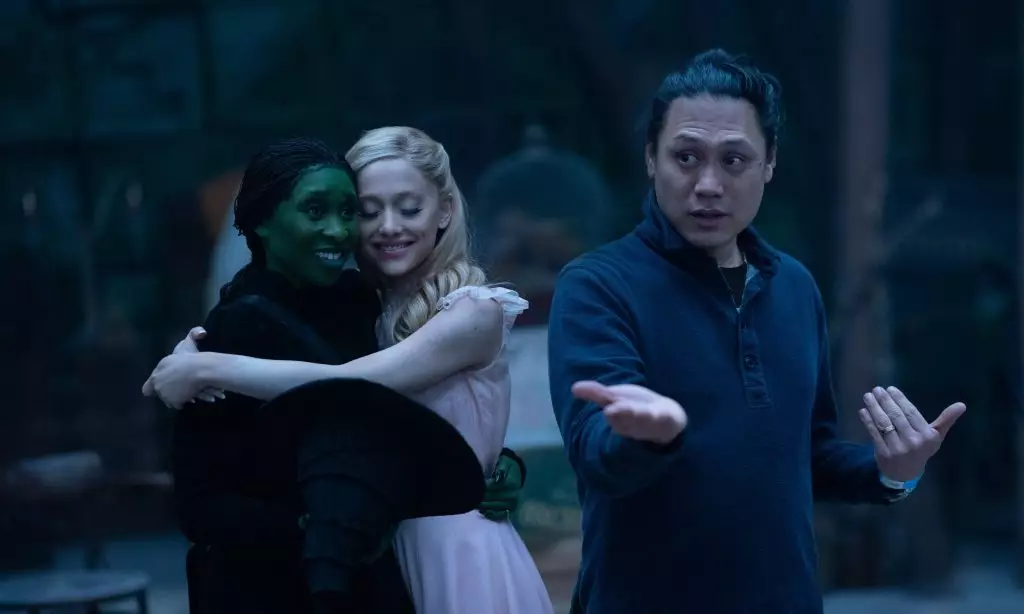The cinematic adaptation of “Wicked,” directed by Jon M. Chu, has sparked a notable conversation amongst fans and critics alike regarding its visual presentation, particularly in its use of color. As the film strives to reinterpret the iconic world first introduced in “The Wizard of Oz,” it faces the challenge of living up to the luminance and vibrancy that characterized the 1939 classic. However, while some fans have expressed disappointment in what they perceive as a more desaturated color palette, Chu offers an insightful rationale that reframes our appreciation of Oz’s aesthetic.
Chu’s artistic vision aimed to establish Oz as a tangible environment rather than a fantastical illusion. In interviews, he stated that the objective was to immerse viewers in a world that felt “real.” This notion of reality in a fantastical setting is pivotal; it juxtaposes the abstract nature of dreams with the genuine struggles of the characters portrayed. The deliberate choice to adopt a more muted color scheme serves a narrative purpose and speaks to the underlying themes of relatability and authenticity within the characters’ journeys.
As viewers and audiences reflect upon Chu’s narrative direction, it becomes clear that he seeks to present a landscape brimming with complexity—both emotionally and visually. By prioritizing the natural elements of Oz and allowing the environment to resonate with the characters’ inner experiences, Chu effectively dismantles the notion that vibrant colors are synonymous with emotional depth. Instead, he invites audiences to engage with Oz on a more visceral level.
The dialogue surrounding the film’s color grading extends beyond aesthetic criticism to encapsulate broader themes present in “Wicked.” Many fans have articulated their grievances on social media platforms, referencing the film’s “drab” and “backlit” visuals. However, what veterans of film analysis recognize is that color is not merely decorative; it serves as a vehicle for storytelling.
In Chu’s vision, the muted hues represent the complexities faced by the characters Elphaba and Glinda, mirroring their evolution throughout the narrative. The gradual increase in color contrast may symbolize Elphaba’s burgeoning strength and the vibrancy she brings to the oppressive nature of Oz. In this way, color becomes a narrative device, indicating an internal shift and evolution rather than simply providing a feast for the eyes.
The ongoing discussion surrounding the film’s aesthetics has also addressed the practicality—and perhaps impossibility—of replicating traditional technicolor cinematography. While some enthusiasts yearn for the boldness that technicolor once provided, Chu’s choice to focus on earthy tones and textures suggests a profound respect for the environment of Oz as more than just a backdrop for action. He embraces originality over replication, hinting at the idea that Oz is multidimensional and capable of evolving beyond past interpretations.
Moreover, the critic responses throughout its release underscore the film’s provocative nature within the film industry. In a landscape characterized by grand sequels and genre repetitions, “Wicked” stands out by challenging viewers to navigate the inherent complexities of its characters and their relationships with both each other and their environment. Chu has positioned himself as a director unafraid to steer away from convention in favor of a thoughtful and immersive narrative.
Despite the polarized opinions regarding the film’s visuals, “Wicked” has proven to be a tremendous success commercially. Breaking numerous box office records and enjoying the largest pre-Thanksgiving opening in over ten years illustrates the film’s marketability despite critical discourse. The audience’s enthusiasm for “Wicked” reinforces the idea that while visuals are significant, they do not solely dictate a film’s quality or its ability to connect with viewers.
Ultimately, Jon M. Chu’s artistic choices in “Wicked” prompt us to reflect critically on our expectations of cinematic adaptations. Perhaps the controversy surrounding its aesthetics is a testament to the film’s ambition—an endeavor to redefine our perception of a beloved classic while also verifying that the heart of the story can transcend mere imagery. In this light, “Wicked” invites audiences not only to engage with its visual landscape but also to reconsider the essence of storytelling within the realm of fantasy.

